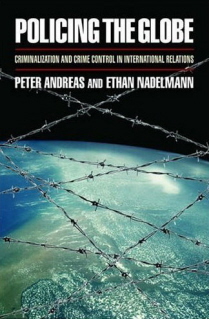Afghan opium cultivation shows divergent north-south trends in 2007, UNODC survey shows
UN drugs chief urges more rapid disbursement of aid for farmers
VIENNA, 5 March 2007 (UNODC) - Divergent trends characterize opium cultivation in Afghanistan this year, with a pronounced divide between the troubled south of the country and the more stable centre-north, according to a survey by the United Nations Office on Drugs and Crime and Afghanistan's Ministry of Counter Narcotics.
UNODC's Afghanistan Opium Winter Assessment suggests that cultivation is likely to decrease in seven of the country's 34 provinces, with no change expected in six. Another six provinces are opium-free and likely to remain so. In the remaining 15 provinces - mainly in the south, east and west - increases are expected.
On balance, the increase in the south may be greater than the decline elsewhere, causing a possible further rise in Afghanistan's aggregate drug supply this year. However, a strong eradication campaign is underway and this could have an impact on the situation in some provinces, including in the south of the country.
"The trend towards more and more provinces in Afghanistan cultivating opium may be broken," UNODC Executive Director Antonio Maria Costa said. "We are witnessing divergent trends. This is a moderately good sign."
"There is evidence that Afghanistan's opium economy is becoming segmented, with farmers' attitudes, supply conditions and price trends moving in opposite directions in the north and the south of the country," he added. "This market segmentation is likely to be reinforced by what appears to be a more vigorous opium eradication campaign than seen in recent years."
The Survey, conducted in December and January, shows a clear link between poor security conditions and opium poppy cultivation in the southern provinces. While only 20 percent of farmers in areas with good security grow opium, 80 percent do so in areas where security is poor.
"In the south, the vicious circle of drugs funding terrorism and terrorists supporting drug traffickers is stronger than ever," Mr Costa said. "In other words, opium cultivation in the south of the country is less a narcotic issue and more a matter of insurgency, so it is vital to fight them both together."
Significant decreases in opium cultivation are expected in the centre and the north of the country, thanks to initiatives aimed at providing farmers and local leaders with incentives to switch to licit livelihoods. Only six percent of villages which have received external assistance such as medical care, schools, roads, electricity or irrigation this year are engaged in opium cultivation.
"Farmers are speaking loud and clear. They respond to real incentives to stop growing opium," the UNODC Executive Director said. "Targeted, increased and sustained development assistance leads to tangible improvements in their lives and in return they demonstrate a desire to return to legality."
A Good Performance Initiative was recently established to reward provinces that are opium-free and those that demonstrate significant progress towards becoming opium-free. The goal for 2007 is to double the number of opium-free provinces from six to twelve, with further improvements expected in the following years.
"Targeted assistance may help create an opium-free belt across the middle of the country, from the border with Pakistan in the south-east to the border with Turkmenistan in the north-west, allowing the government and the international community to concentrate efforts to combat crime and insurgency in the south," Mr Costa said.
"It is possible to claw Afghanistan back into legality province by province, as was done in Thailand, Laos and Myanmar, all of which were once characterized by large scale opium cultivation.''
Mr Costa expressed concern that only around one percent of the total of $100 million available through the Good Performance Initiative and the Counter-Narcotics Trust Fund had so far been disbursed . "This money is vital for the future of Afghanistan. I appeal to both the national and international bureaucracies to get it moving."
Afghanistan's fertile but highly unstable southern provinces accounted for the bulk of all opium cultivated in Afghanistan last year. A record 165,000 hectares were under opium poppy cultivation in 2006, an increase of 59 per cent compared to 2005.
This was mainly due to large-scale cultivation in the southern province of Helmand. Further increases in Helmand, as well as in Uruzgan and Kandahar provinces, are likely this year. In all cases, permanent Taliban settlements have provided sanctuary for drug cultivation, heroin processing and trafficking into Pakistan and Iran. The revenue received in return is used to fund Taliban activities.
The Survey shows that 80 percent of farmers in poppy-growing areas in the south are involved in opium cultivation. Nationally, the proportion is only 13 percent.
The high sale price of opium is the main reason given by farmers for growing opium, especially when there is little risk of their crops being eradicated.
''At the moment, none of Afghanistan's legitimate agricultural products can match the income available from opium poppy, which is estimated at US$ 4,900 per hectare -- about ten times the income from licit crops. We need to change the risk/reward balance for farmers, increasing both the attractiveness of licit activity and the retribution for not complying with the law,'' Mr Costa added.
He also called on the international community to support a recently launched initiative to strengthen joint border controls and improve cross-border intelligence-sharing on the trafficking of drugs and their chemical precursors between Afghanistan, Iran and Pakistan.
Link





